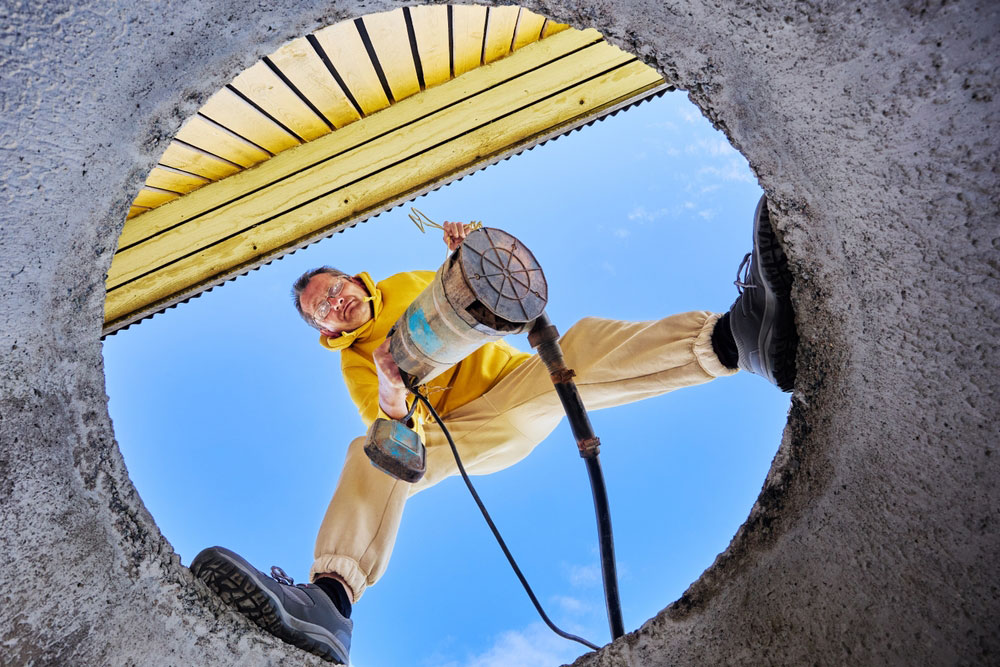A sump pump is your home’s first line of defense against basement flooding during heavy storms. It works by channeling excess groundwater away from your foundation, protecting your property from water damage and mold.
But when your sump pump fails—especially during a storm—the risk of flooding increases dramatically, and fast action is crucial. Storms often bring power outages, equipment overload, or mechanical issues that can stop your sump pump in its tracks.
Knowing what steps to take in the moment can help minimize damage, protect your belongings, and restore your home’s safety. Here’s what to do if your sump pump fails during a storm.
Respond Immediately to Stop Water Damage
As soon as you notice that your sump pump isn’t working, take these actions to limit water intrusion.
- Unplug the sump pump to prevent electrical hazards or further equipment damage.
- Use towels, buckets, or a wet/dry vacuum to manually remove water from the sump pit and surrounding area.
- Elevate furniture, boxes, and electronics off the floor to prevent further water exposure.
- If flooding is extensive, turn off power to the affected area (if safe) to avoid electrical shock.
Immediate response is key to minimizing structural damage and preventing the growth of mold and mildew. The faster you act, the less long-term repair you’ll need.
Identify the Cause of the Failure
Once the immediate threat is under control, determine why the sump pump stopped working so you can resolve the issue properly.
- Check for a tripped circuit breaker or blown fuse, especially if the pump stopped during a power surge.
- Inspect the float switch, which may be stuck or obstructed by debris in the pit.
- Look for clogs in the discharge pipe, which can prevent water from flowing out properly.
- Examine the pump for signs of motor burnout, overheating, or mechanical failure.
Understanding the cause will help you decide whether the issue is something you can fix or if you need to call a professional.
Use Backup Options to Prevent Further Flooding
If your primary sump pump has failed and flooding is still a threat, backup systems can provide temporary protection.
- Use a battery-powered backup sump pump if you have one installed—it activates automatically when the main pump fails.
- If you don’t have a backup, use a utility pump or transfer pump to move water away from the basement manually.
- Consider installing a water-powered sump pump if your home has high water pressure; it works without electricity or batteries.
- Keep a portable generator ready in case of power failure so the sump pump can continue running during long outages.
Having a backup system or manual alternative in place can make all the difference during extended storms or power outages.
Prevent Future Failures with Long-Term Solutions
Once the storm has passed and the immediate problem is resolved, take proactive steps to avoid future sump pump failures.
- Schedule annual sump pump maintenance to clean debris, test functionality, and replace worn parts.
- Install a sump pump alarm that notifies you if the water level rises too high or the pump stops working.
- Consider upgrading to a high-capacity or dual-pump system if your area is prone to heavy rains and flooding.
- Keep your gutters and downspouts clear to reduce excess water around your foundation, lightening the pump’s workload.
Investing in regular maintenance and better equipment now can save thousands of dollars in water damage repairs later.
A sump pump failure during a storm is a stressful and potentially costly experience—but knowing how to respond can make all the difference. By acting quickly to control water, diagnosing the problem, using backup solutions, and planning for the future, you can protect your home and family from serious flood damage.
Don’t wait for the next storm to strike—take time now to ensure your sump pump system is reliable, maintained, and ready for whatever weather comes your way.

